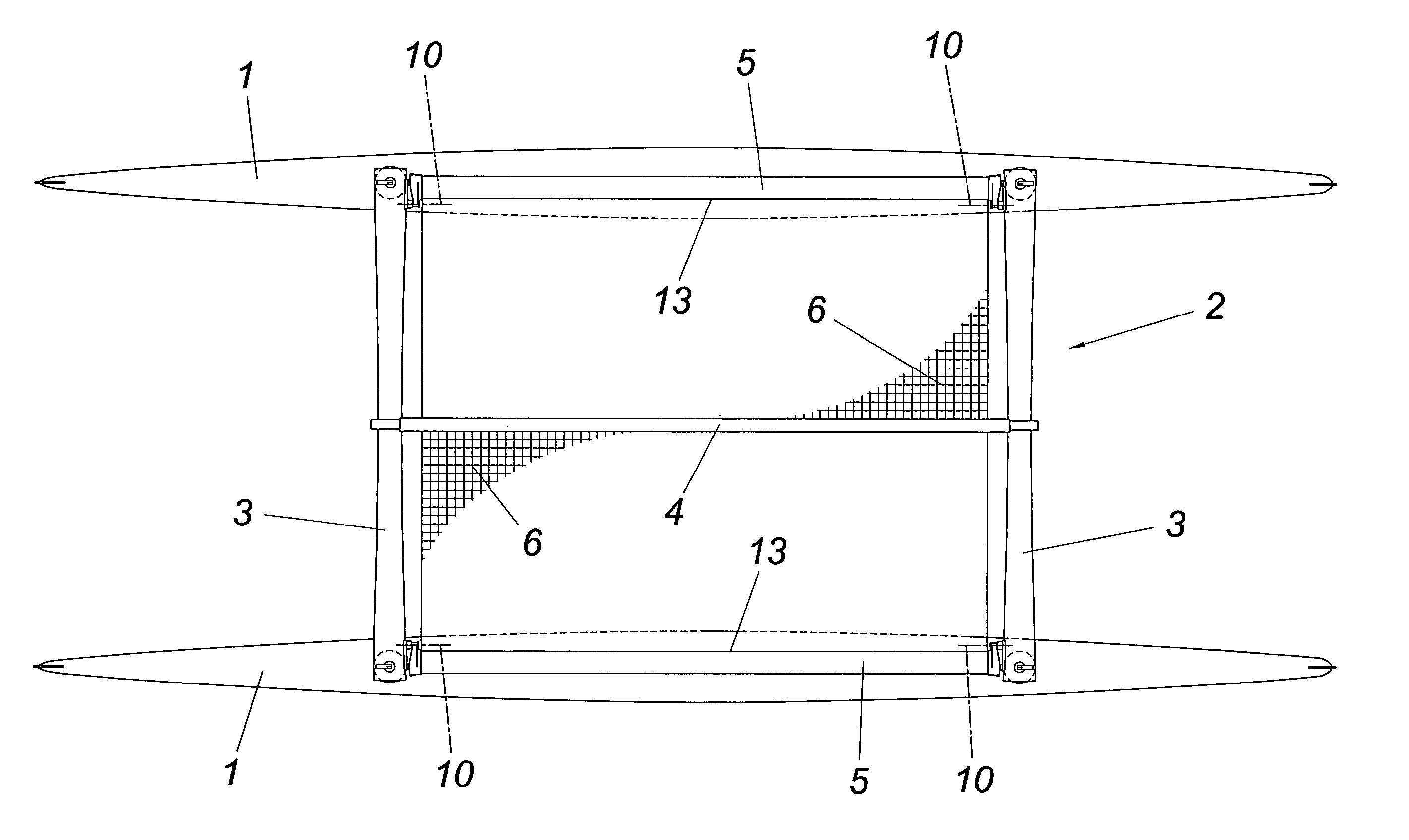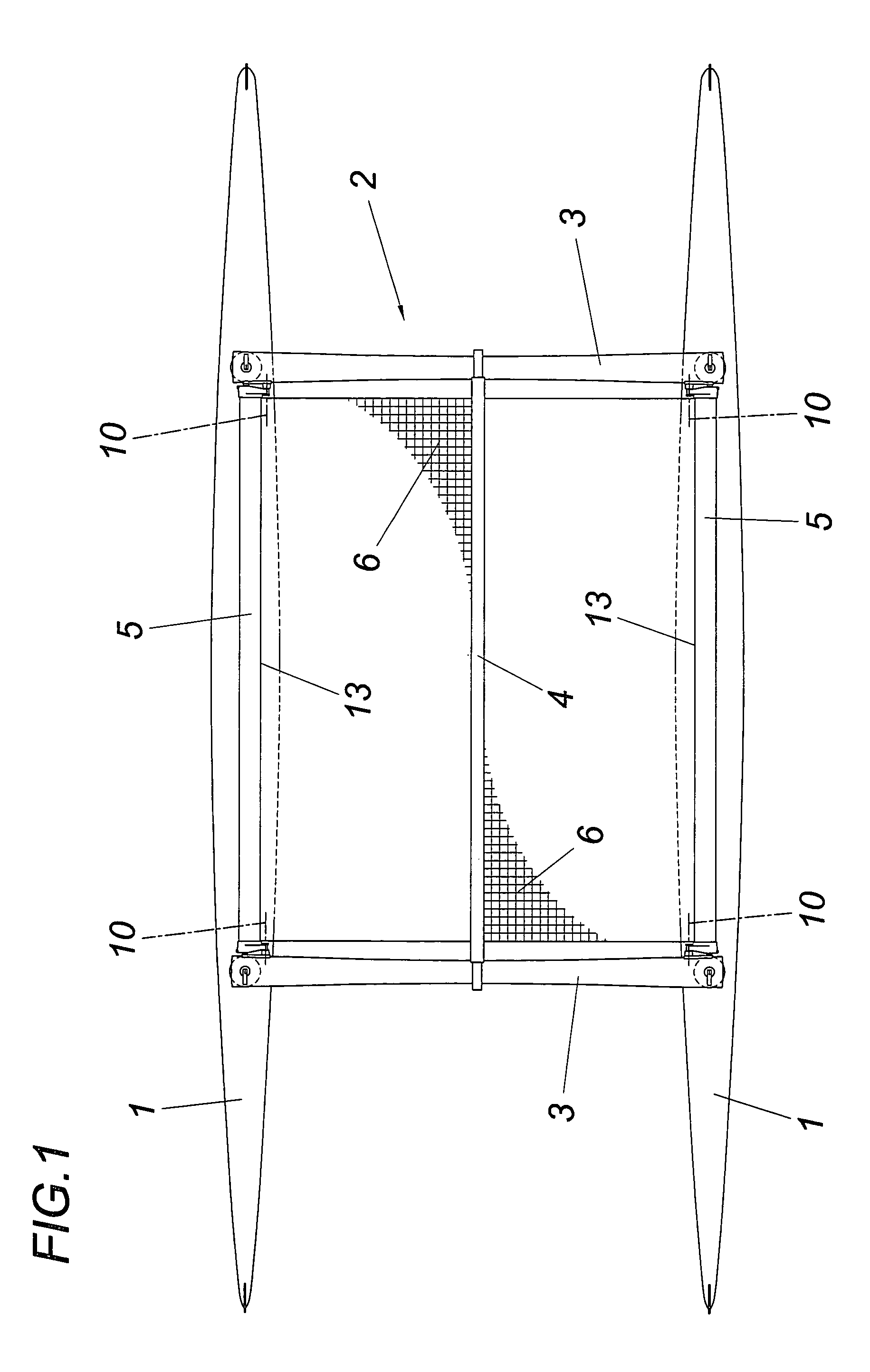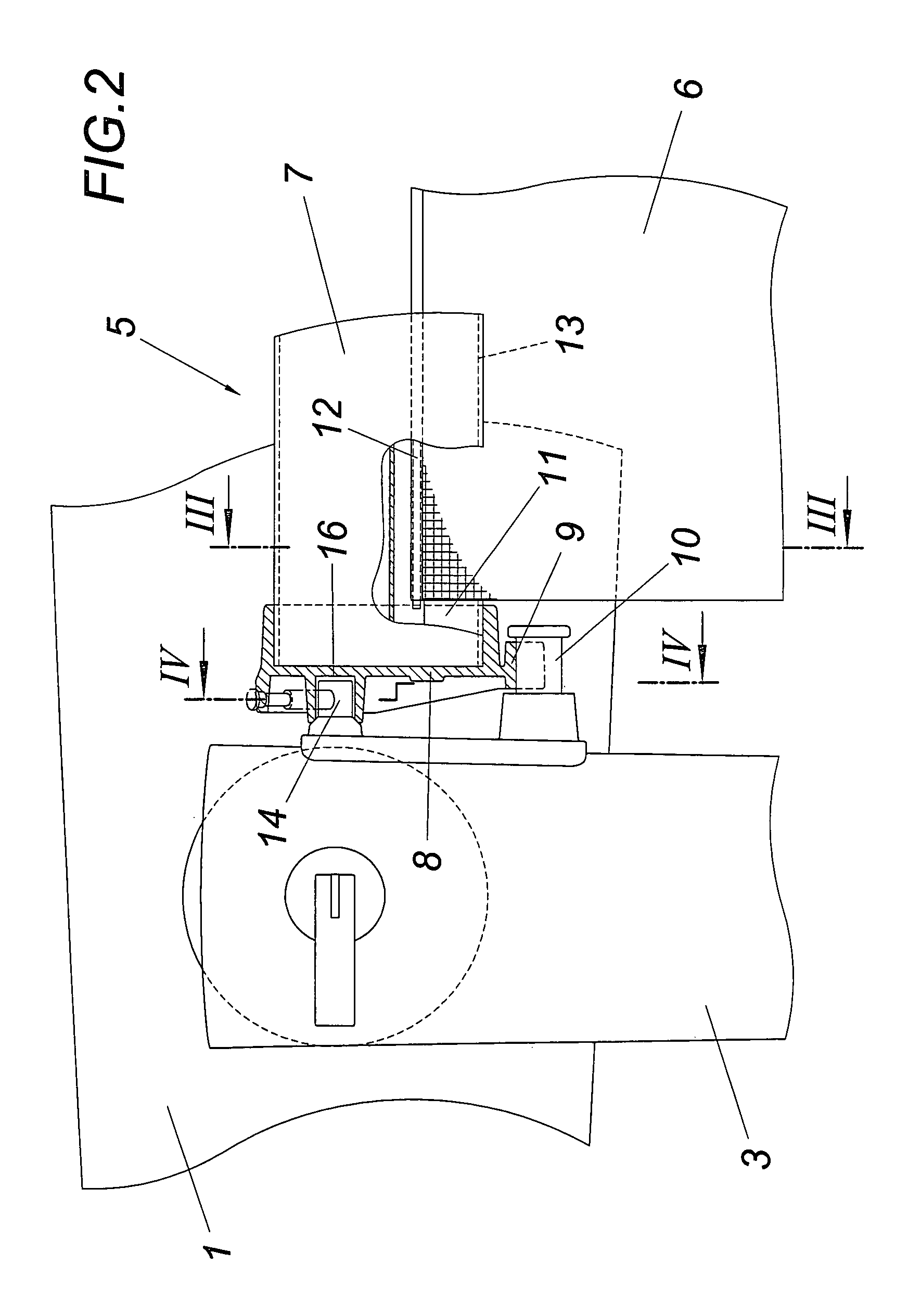Tensioning device for a carrying net
a technology of tensioning device and carrying net, which is applied in the direction of waterborne vessels, floating buildings, vessel construction, etc., can solve the problems of difficult adhesion of advantageous tensioning force, and achieve the effect of simplifying design
- Summary
- Abstract
- Description
- Claims
- Application Information
AI Technical Summary
Benefits of technology
Problems solved by technology
Method used
Image
Examples
Embodiment Construction
[0014]According to FIG. 1, the illustrated catamaran has two hulls 1 which are releasably joined together by a cradle 2. This cradle 2 has two connecting struts 3 which carry a central longitudinal beam 4 and receive, at the end side, tensioning legs5 which each form with the longitudinal beam 4 and the connecting struts 3 a tensioning frame for a carrying net 6. The two carrying nets 6 are each connected to the longitudinal beam 4 and the associated tensioning leg 5 in a tensile-resistant manner. The tensioning legs 5 are each composed of a profile 7 and end caps 8 which close off the profile 7 at the end side and form a bearing half-shell 9 for pivotable support on a pivot shaft 10 formed by shaft stubs on the connecting struts 3. The profile 7 comprises a longitudinal groove 11 for receiving an edge portion of the carrying net 6 which is secured in the longitudinal groove 11 by means of a beading 12.
[0015]As may be seen in particular from FIGS. 2 and 3, the pivot shaft 10 for the...
PUM
 Login to View More
Login to View More Abstract
Description
Claims
Application Information
 Login to View More
Login to View More - R&D
- Intellectual Property
- Life Sciences
- Materials
- Tech Scout
- Unparalleled Data Quality
- Higher Quality Content
- 60% Fewer Hallucinations
Browse by: Latest US Patents, China's latest patents, Technical Efficacy Thesaurus, Application Domain, Technology Topic, Popular Technical Reports.
© 2025 PatSnap. All rights reserved.Legal|Privacy policy|Modern Slavery Act Transparency Statement|Sitemap|About US| Contact US: help@patsnap.com



